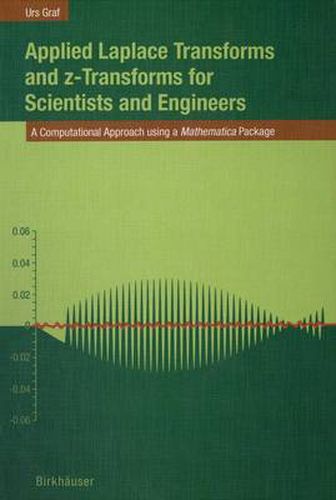Readings Newsletter
Become a Readings Member to make your shopping experience even easier.
Sign in or sign up for free!
You’re not far away from qualifying for FREE standard shipping within Australia
You’ve qualified for FREE standard shipping within Australia
The cart is loading…






This title is printed to order. This book may have been self-published. If so, we cannot guarantee the quality of the content. In the main most books will have gone through the editing process however some may not. We therefore suggest that you be aware of this before ordering this book. If in doubt check either the author or publisher’s details as we are unable to accept any returns unless they are faulty. Please contact us if you have any questions.
The theory of Laplace transformation is an important part of the mathematical background required for engineers, physicists and mathematicians. Laplace transformation methods provide easy and effective techniques for solving many problems arising in various fields of science and engineering, especially for solving differential equations. What the Laplace transformation does in the field of differential equations, the z-transformation achieves for difference equations. The two theories are parallel and have many analogies. Laplace and z transformations are also referred to as operational calculus, but this notion is also used in a more restricted sense to denote the operational calculus of Mikusinski. This book does not use the operational calculus of Mikusinski, whose approach is based on abstract algebra and is not readily accessible to engineers and scientists. The symbolic computation capability of Mathematica can now be used in favor of the Laplace and z-transformations. The first version of the Mathematica Package LaplaceAndzTransforrns developed by the author appeared ten years ago. The Package computes not only Laplace and z-transforms but also includes many routines from various domains of applications. Upon loading the Package, about one hundred and fifty new commands are added to the built-in commands of Mathematica. The code is placed in front of the already built-in code of Laplace and z-transformations of Mathematica so that built-in functions not covered by the Package remain available. The Package substantially enhances the Laplace and z-transformation facilities of Mathematica. The book is mainly designed for readers working in the field of applications.
$9.00 standard shipping within Australia
FREE standard shipping within Australia for orders over $100.00
Express & International shipping calculated at checkout
This title is printed to order. This book may have been self-published. If so, we cannot guarantee the quality of the content. In the main most books will have gone through the editing process however some may not. We therefore suggest that you be aware of this before ordering this book. If in doubt check either the author or publisher’s details as we are unable to accept any returns unless they are faulty. Please contact us if you have any questions.
The theory of Laplace transformation is an important part of the mathematical background required for engineers, physicists and mathematicians. Laplace transformation methods provide easy and effective techniques for solving many problems arising in various fields of science and engineering, especially for solving differential equations. What the Laplace transformation does in the field of differential equations, the z-transformation achieves for difference equations. The two theories are parallel and have many analogies. Laplace and z transformations are also referred to as operational calculus, but this notion is also used in a more restricted sense to denote the operational calculus of Mikusinski. This book does not use the operational calculus of Mikusinski, whose approach is based on abstract algebra and is not readily accessible to engineers and scientists. The symbolic computation capability of Mathematica can now be used in favor of the Laplace and z-transformations. The first version of the Mathematica Package LaplaceAndzTransforrns developed by the author appeared ten years ago. The Package computes not only Laplace and z-transforms but also includes many routines from various domains of applications. Upon loading the Package, about one hundred and fifty new commands are added to the built-in commands of Mathematica. The code is placed in front of the already built-in code of Laplace and z-transformations of Mathematica so that built-in functions not covered by the Package remain available. The Package substantially enhances the Laplace and z-transformation facilities of Mathematica. The book is mainly designed for readers working in the field of applications.